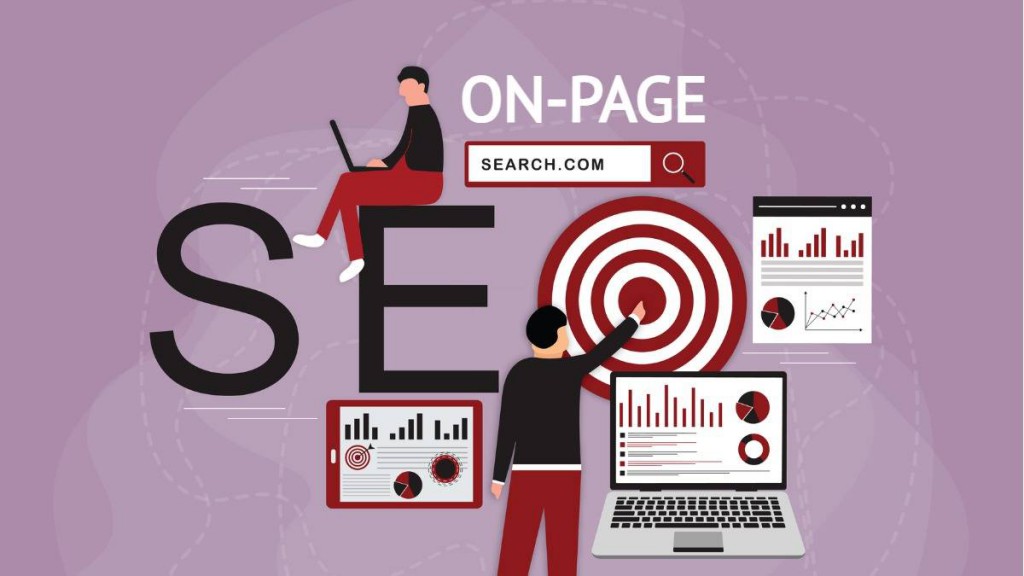On-page SEO remains a cornerstone of successful digital marketing. Unlike off-page SEO, which involves external factors like backlinks, on-page SEO focuses on optimizing individual web pages to rank higher and attract more relevant traffic. This guide covers the essential on-page SEO elements you need to master to improve your website’s visibility and performance.
On-page SEO refers to the practice of optimizing various elements on your website to improve its search engine rankings. These elements include content, meta tags, headings, images, and internal links. By focusing on on-page SEO, you ensure that each page of your website is fully optimized to provide the best user experience and meet search engine requirements.
Key Elements of On-Page SEO
- Title TagsThe title tag is one of the most important on-page SEO factors. It appears as the clickable headline in search engine results and should accurately reflect the content of the page. Keep title tags concise, ideally between 50-60 characters, and include primary keywords naturally.
- Meta DescriptionsMeta descriptions provide a summary of a page’s content and appear beneath the title tag in search results. Although not a direct ranking factor, a well-crafted meta description can influence click-through rates. Aim for 150-160 characters and include a compelling call to action and relevant keywords.
- Headings (H1, H2, H3, etc.)Headings help organize content and make it easier for users and search engines to understand the structure of a page. The H1 tag is typically reserved for the main title, while H2 and H3 tags are used for subheadings. Incorporate relevant keywords naturally and ensure a logical hierarchy.
- Content Quality and RelevanceHigh-quality content is crucial for on-page SEO. Ensure your content is informative, engaging, and relevant to your target audience. Use keywords strategically, but avoid keyword stuffing. Focus on providing value to your readers and addressing their needs and queries.
- Internal LinkingInternal links connect various pages on your website, helping search engines understand the structure and hierarchy of your site. Use descriptive anchor text and link to relevant pages to enhance user experience and distribute link equity throughout your site.
- Image OptimizationImages can enhance user experience and engagement, but they need to be optimized for SEO. Use descriptive, keyword-rich file names and alt text for images. Compress images to reduce load times and ensure they don’t negatively impact page speed.
- URL StructureA well-structured URL is easy for both users and search engines to understand. Use clear, descriptive URLs that include relevant keywords. Avoid long and complex URLs, and use hyphens to separate words.
- Mobile-FriendlinessWith the increasing use of mobile devices, ensuring your website is mobile-friendly is crucial. Use responsive design to ensure your site adapts to various screen sizes and provides a seamless experience across devices.
- Page Load SpeedPage load speed is a critical factor for both user experience and search rankings. Optimize images, leverage browser caching, and minimize HTTP requests to improve load times. Tools like Google PageSpeed Insights can help identify areas for improvement.
- User Experience (UX)A positive user experience can indirectly impact your SEO. Ensure your site is easy to navigate, visually appealing, and accessible. Focus on creating a seamless and enjoyable experience for visitors to encourage longer dwell times and reduce bounce rates.

Step-by-step On-Page SEO Guide to improve rankings and website performance
Best Practices for On-Page SEO
- Regularly Update Content: Keep your content fresh and relevant by regularly updating it with new information and insights.
- Monitor Performance: Use tools like Google Analytics and Google Search Console to track your page’s performance and identify areas for improvement.
- Stay Informed: SEO best practices evolve over time. Stay updated with industry trends and algorithm changes to ensure your on-page SEO strategies remain effective.
Wrapping it up
Mastering on-page SEO is essential for improving your website’s search engine rankings and providing a better user experience. By focusing on key elements like title tags, meta descriptions, content quality, and user experience, you can optimize your site to attract more relevant traffic and achieve your SEO goals. Remember, effective on-page SEO requires ongoing effort and adaptation, so stay proactive and continue refining your strategies.






